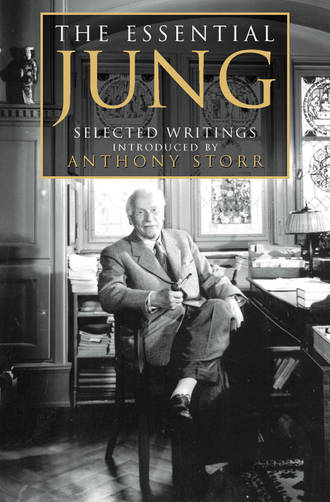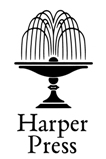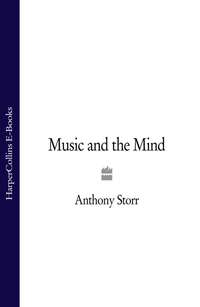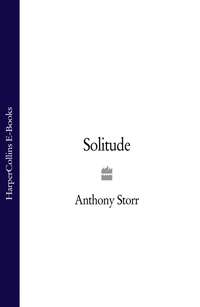
Полная версия
The Essential Jung: Selected Writings

The Essential Jung
Selected and introduced by
Anthony Storr

Copyright
Harper Press
An Imprint of HarperCollinsPublishers 77–85 Fulham Palace Road Hammersmith, London, W6 8JB
Published, with a revised bibliography, by Fontana Press 1998
First published in Great Britain in 1983 by Fontana Paperbacks as Jung: Selected Writings, part of the Fontana Pocket Readers series. Second Edition 1986
Copyright © C. G. Jung 1983 Introduction copyright © Anthony Storr, 1983
A catalogue record for this book is available from the British Library
All rights reserved under International and Pan-American Copyright Conventions. By payment of the required fees, you have been granted the non-exclusive, non-transferable right to access and read the text of this e-book on-screen. No part of this text may be reproduced, transmitted, down-loaded, decompiled, reverse engineered, or stored in or introduced into any information storage and retrieval system, in any form or by any means, whether electronic or mechanical, now known or hereinafter invented, without the express written permission of HarperCollins e-books.
HarperCollinsPublishers has made every reasonable effort to ensure that any picture content and written content in this ebook has been included or removed in accordance with the contractual and technological constraints in operation at the time of publication.
Source ISBN: 9780006530657
EPub Edition © FEBRUARY 2013 ISBN: 9780007382033
Version: 2014-12-09
Contents
Title Page
Copyright
Note on the Text
Preface
Introduction
Part 1 Jung’s Early Work
From “On the Psychology and Pathology of So-called Occult Phenomena” (1902)
From “School Years” Memories, Dreams, Reflections (1962)
From “Tavistock Lecture II” (1935)
From “A Review of the Complex Theory” (1934)
From “Mental Disease and the Psyche” (1928)
From “On the Psychogenesis of Schizophrenia” (1939)
Part 2 Jung’s Involvement with Freud and His Divergence from Freud’s Theories
“Psychoanalysis and Neurosis” (1916)
From “The Theory of Psychoanalysis” (1913)
From “Sigmund Freud” Memories, Dreams, Reflections (1962)
From “On Psychic Energy” (1928)
Part 3 The Development of the Idea of the Collective Unconscious and of Archetypes
From “Recent Thoughts on Schizophrenia” (1957)
From “The Structure of the Psyche” (1927/31)
From “On the Psychology of the Unconscious” Two Essays on Analytical Psychology (1917/26/43)
From “Confrontation with the Unconscious” Memories, Dreams, Reflections (1962)
From “The Stages of Life” (1930/1)
From “Confrontation with the Unconscious” Memories, Dreams, Reflections (1962)
From “Confrontation with the Unconscious” Memories, Dreams, Reflections (1962)
From “Psychological Aspects of the Mother Archetype” (1938/54)
Part 4 Archetypes: Shadow; Anima; Animus; the Persona; the Old Wise Man
From Psychology and Religion (1938/40)
From “The Shadow” Aion (1951)
From “The Relations between the Ego and the Unconscious” Two Essays on Analytical Psychology (1929)
From “Definitions” Psychological Types (1921)
From “The Relations between the Ego and the Unconscious” Two Essays on Analytical Psychology (1928)
From “The Syzygy: Anima and Animus” Aion (1951)
From “Confrontation with the Unconscious” Memories, Dreams, Reflections (1962)
From “The Relations between the Ego and the Unconscious” Two Essays on Analytical Psychology (1928)
From “The Phenomenology of the Spirit in Fairytales” (1945/8)
Part 5 Psychological Types and the Self-regulating Psyche
“Introduction” Psychological Types (1921)
“Psychological Typology” (1936)
From “On the Psychology of the Unconscious” Two Essays on Analytical Psychology (1917/26/43)
“The Practical Use of Dream-analysis” (1934)
Part 6 The Development of the Individual
“The Development of Personality” (1934)
From “The Aims of Psychotherapy” (1931)
“Conscious, Unconscious, and Individuation” (1939)
From “Commentary on The Secret of the Golden Flower” (1929)
Part 7 Integration, Wholeness, and the Self
From “Confrontation with the Unconscious” Memories, Dreams, Reflections (1962)
“Mandalas” (1955)
From Psychology and Religion (1938/40)
From Psychology and Religion (1938/40)
From “The Work” Memories, Dreams, Reflections (1962)
“Introduction to the Religious and Psychological Problems of Alchemy” Psychology and Alchemy (1944)
From “The Conjunction” Mysterium Coniunctionis (1955/6)
Part 8 Self and Opposites: God and the Problem of Evil
From “Christ, a Symbol of the Self” Aion (1951)
From Answer to Job (1952)
From Answer to Job (1952)
Part 9 “Unus Mundus and Synchronicity
From “Flying Saucers: a Modern Myth of Things Seen in the Skies” (1958)
From “The Conjunction” Mysterium Coniunctionis (1955/6)
From “On the Nature of the Psyche” (1947/54)
From “Synchronicity: an Acausal Connecting Principle” (1952)
From Answer to Job (1952)
From “Flying Saucers: a Modern Myth of Things Seen in Skies” (1958)
From letter to Father Victor White (10 April 1954)
Part 10 Man and His Future
“The Undiscovered Self (Present and Future)” (1957)
Chronology of Jung’s Life and Work
Keep Reading
Glossary
Bibliography
About the Author
Index
About the Publisher
Note on the Text
Bibliographical details of the works from which I have taken extracts – Collected Works (CW), Memories, Dreams, Reflections (MDR), Septem Sermones ad Mortuos, The Freud/Jung Letters and Letters – are given on pages 434–5. English and American page or paragraph numbering diverges only in the case of MDR; when quoting from this book I have given the English hardback edition’s pages followed by those of the American edition.
I have been selective about my inclusion of footnotes, keeping those of Jung’s which illuminate the text or which refer to sources of interest to the non-specialist reader, but omitting his and his editors’ references to works which, particularly in the case of the alchemical volumes, are unobtainable by all but the most dedicated scholars. Where editors’ notes have been retained, they are within square brackets. I have used the bibliographies contained in CW to fill out Jung’s footnotes where appropriate.
Preface
Throughout his long life, C. G. Jung was a prolific writer, so that his Collected Works run to no less than eighteen large volumes. In addition, there are two volumes of his letters, a separate volume of his correspondence with Freud, and his autobiography, Memories, Dreams, Reflections. Comparatively few people are prepared to read the whole corpus of this material; but many might welcome the opportunity to become acquainted with Jung’s thought as he himself expounded it. This book is an attempt to distil the essential features of Jung’s psychology as it developed during the course of his life by means of extracts from his own writings. Since Jung’s way of thinking may be unfamiliar to contemporary readers, I have summarized the main features of his thought in an introduction; and I have prefaced the extracts which I have chosen with brief explanatory remarks. But, so far as is possible, I have let Jung present his ideas in his own words. My purpose has been exposition, not criticism; and it must not be assumed that I personally subscribe to everything that Jung wrote.
Anthony Storr
Introduction
Carl Gustav Jung was born on 26 July 1875 and died on 6 June 1961. The greater part of his early childhood was spent at Klein-Hüningen, near Basel, to which his family moved in 1879. Jung attended the local school from the age of six, and, in his eleventh year, was transferred to the Gymnasium in Basel. From here, he went on to study medicine at the University of Basel during the years 1895–1900. Concurrently, he read extensively in the fields of philosophy and theology.
In 1900, he moved to Zurich where he became an assistant physician to Eugen Bleuler at the Burghölzli mental hospital. He was later promoted to Senior Staff Physician. In 1902–3, he spent a term at the Salpêtrière in Paris in order to study psychopathology with Pierre Janet. During these first years in psychiatry, he wrote his MD dissertation, “On the Psychology and Pathology of So-called Occult Phenomena”; undertook experimental work in word association; and, in 1903, married Emma Rauschenbach, by whom he had a son and four daughters. In 1905, he was appointed a lecturer in the University of Zurich.
In 1907, Jung published a pioneering book on schizophrenia, The Psychology of Dementia Praecox, which he sent to Freud. This led to a meeting between the two men in Vienna, and to a close association between them which lasted until 1913. In 1909, Jung, in company with Freud and Ferenczi, paid his first visit to the USA, where he lectured on word-association experiments and received an honorary degree from Clark University, in Massachusetts. In the same year, Jung gave up his post at the Burghölzli in favour of his growing private practice which he conducted in his own house at Küsnacht on the Lake of Zurich. Although he travelled in various parts of the world and paid frequent visits to his country retreat in Bollingen, which was also on the Lake of Zurich, Jung continued to practise and to write in the same house in Küsnacht until his death in 1961. His last piece of writing was completed only ten days before he died.
Jung’s earliest work and his later writings have more in common than is generally supposed. They are linked by the theme that mental illness is characterized by disunity of the personality, whilst mental health is manifested by unity. Jung’s first study was conducted on a 15½-year-old girl who, claiming to be a medium, said that she was “controlled” by a variety of different personalities, which Jung interpreted as personifications of various unconscious parts of herself. Before Freud’s concept of repression became widely employed, the term used to describe such phenomena was “dissociation”; and Jung, who at that time was as much influenced by Janet, with whom he had studied, as he was by Freud, whom he had only read, continued to think of personality as being capable of dissociation into a number of subsidiary personalities, any of which could temporarily “take over.” Although Jung accepted the idea of repression in the Freudian sense of making the unacceptable unconscious, and thus inaccessible, he continued to think and write in terms of subsidiary, dissociated personalities, and it is important to bear this in mind when approaching his work. In hysteria, for example, the patient might behave as if she were two or more different persons, who were sometimes given different names and who had no cognizance of each other. Dissociation was a splitting of the personality in which the right hand did not know what the left was doing; and it followed that cure of this type of neurosis depended upon making the divided selves conscious of each other and thus creating a new unity. In schizophrenia, the personality appeared fragmented into many parts, rather than into two or three as in hysteria. Moreover, whereas the hysteric retained contact with reality by means of that part of the personality which was already being called the “ego,” the schizophrenic lost contact with reality because the ego was overwhelmed by irruptions from the unconscious and became only one “voice” amongst many.
Jung’s next group of studies was based upon the word-association test. A list of a hundred words is read out, and the subject is asked to respond to each with the first word that occurs to him. By timing the interval between stimulus and response, it becomes possible to show that, unknown to themselves, subjects are influenced by words which arouse emotion and slow down their responses. Often, groups of words were linked around a theme; and to such a collection of associations, Jung applied the word “complex,” a term which he introduced into psychology. He regarded complexes as similar to, but lesser than, the subsidiary personalities referred to above. These experiments were important in that they demonstrated objectively, in ways which could be measured, the dynamic effects of unconscious mental contents. They will also remind the reader that Jung was trained in the natural sciences and had an accurate grasp of scientific method, although his later interests drew him into fields where scientific method cannot easily be applied.
Although Freud’s writings were being eagerly discussed by the younger generation when Jung was working at the Burghölzli, psychiatry was dominated by German phenomenology. Psychiatrists were content to describe their patients’ symptoms and behaviour, and to fit them into diagnostic categories, without attempting to understand them as individuals. Jung, by applying psychoanalytic ideas to the study of delusions and hallucinations, was able to demonstrate that such phenomena, hitherto dismissed as incomprehensible, could sometimes be shown to have a psychological origin and meaning. Jung remained keenly interested in schizophrenia, and was one of the first psychiatrists to attempt psychoanalytic treatment of the psychotic.
Jung was never dogmatic as to a single “cause” of schizophrenia, although he inclined to the belief that a psychological, rather than a physical, origin was probable. He was also modest in his therapeutic claims, recognizing that only a limited number of cases responded to analysis, and that partial alleviation was more common than cure. Jung considered that there were many schizophrenics who never came near a mental hospital. If such people consulted him, he was cautious and sometimes dismissed them without attempting psychotherapy. Jung was one of the first to recognize that a psychotic episode could be precipitated by analysis.
It was Jung’s intimate acquaintance with the phenomena of schizophrenia which led him to postulate a “collective” unconscious. He found that delusions and hallucinations, which often seemed to be variations on similar themes, could seldom be entirely explained as products of the patient’s personal history. Jung’s extensive knowledge of comparative religion and of mythology led him to detect parallels with psychotic material which argued a common source: a myth-producing level of mind which was common to all men.
Jung described the collective unconscious as consisting of mythological motifs or primordial images to which he gave the name “archetypes.” Archetypes are not inborn ideas, but “typical forms of behaviour which, once they become conscious, naturally present themselves as ideas and images, like everything else that becomes a content of consciousness.” (CW 8, par. 435) Archetypes have an organizing influence on images and ideas. Archetypes are not themselves conscious, but seem to be like underlying ground themes upon which conscious manifestations are sets of variations. Their presence is felt as “numinous”; that is, of profound spiritual significance. Jung wrote:
All the most powerful ideas in history go back to archetypes. This is particularly true of religious ideas, but the central concepts of science, philosophy and ethics are no exception to this rule. In their present form they are variants of archetypal ideas, created by consciously applying and adapting these ideas to reality. For it is the function of consciousness not only to recognize and assimilate the external world through the gateway of the senses, but to translate into visible reality the world within us. [CW 8, par. 342]
Examples of archetypes as images of ideas are given in extracts which follow.
It was also Jung’s study of schizophrenia which led him to formulate a different, and more general, view of psychic energy from that of Freud. Freud believed that schizophrenia, in common with other mental disturbances, was due to repression of sexuality and withdrawal of erotic interest from objects in the external world into the inner world of the subject. Jung considered that contact with the external world was maintained in other ways beside the sexual; and that the loss of contact with reality characteristic of schizophrenia could not be attributed to sexual withdrawal alone. Because of this, he came to use the term “libido” for psychic energy in general, without limiting it to sexuality.
While Jung was still at the Burghölzli, his private practice was also growing, so that he became as familiar with the various types of neurosis as he was with schizophrenia and the other psychoses. His divergence from Freud became wider. Freud believed that neurosis invariably originated in early childhood, and that the incestuous fantasies and desires connected with the Oedipus complex were central factors. (Freud made an exception in the case of so-called “traumatic” neurosis; but this did not form a main part of his theory.) Jung thought that the cause of neurosis usually lay in the present; and that the infantile fantasies which Freud unearthed were secondary phenomena. When the natural course of a man’s development through life was held up, either by misfortune or by his failure to face life’s obligations, his libido became turned in upon himself and reactivated the attitudes and feelings of childhood which would normally have been left behind him. Jung believed that there was a natural and proper path of development for each individual; and that neurosis might actually be a valuable signal which indicated when, through intellectual arrogance, a false set of values or an evasion of responsibilities, a person was straying too far from his own true path. Neurotic symptoms, therefore, might be compensatory; part of a self-regulating mechanism whose aim was the achievement of a better balance within the psyche. Jung sometimes said of an individual: “Thank God, he became neurotic!” Just as pain might make a man realize that there was something wrong with his body, so neurotic symptoms could draw attention to psychological problems of which the individual was unaware.
The idea of self-regulation runs right through the whole of Jung’s scheme of how the mind works, and largely accounts for his view of dreams. Freud considered that the majority of dreams had as their core an unacceptable wish which was striving, in the dream, to find indirect expression. He believed that the “manifest content” of a dream was merely a cloak concealing the “latent content,” which was generally some repressed sexual desire of an infantile kind. Jung, on the other hand, regarded dreams as communications from the unconscious. Dreams might be couched in symbolic language which was hard to understand; but they were not necessarily concerned with wishes, nor ways of concealing the unacceptable. Most commonly, dreams were compensatory to the conscious point of view; expressions of aspects of the individual which were neglected or unrealized; or, like neurotic symptoms, warnings of divergence from the individual’s proper path. Dreams from the collective level might sometimes be visions of vast significance, quite outside the range of conscious contrivance.
The idea of compensation and self-regulation also became linked with Jung’s classification of “psychological types.” It was Jung who introduced the terms “extravert” and “introvert” into psychology. Jung’s observation of the very different ways in which Freud, Adler and he himself approached the same psychological material led him to postulate that individuals adopted differing habitual attitudes toward life which determined their interpretation of experience. The extravert’s bias was toward the external world; the introvert’s, toward the inner world of the psyche. Jung later proposed that the psyche operated by means of four functions: thinking, feeling, sensation and intuition. Any one of these functions could also be predominant in an individual’s way of dealing with experience. For example, a man could be an introverted thinker or an extraverted intuitive or an introverted feeling type. The eight possible types are vividly described in volume 6 of the Collected Works, Psychological Types.
Compensation and self-regulation are integral parts of this type theory. Jung considered that habitual attitudes were nearly always carried too far, so that the thinker neglected his feelings, while the intuitive paid too little attention to the facts given by sensation. Introverts were caught up in their inner worlds; while extraverts lost themselves in the press of events. In Western man, because of the achievements of his culture, there was an especial tendency toward intellectual hubris; an overvaluation of thinking which could alienate a man from his emotional roots. Neurotic symptoms, dreams and other manifestations of the unconscious were often expressions of the “other side” trying to assert itself. There was, therefore, within every individual, a striving toward unity in which divisions would be replaced by consistency, opposites equally balanced, consciousness in reciprocal relation with the unconscious. Jung affirmed that personality was manifested by “definiteness, wholeness and ripeness”. (CW 17, par. 288) He considered personality to be an achievement, not something given. Moreover, it was essentially an achievement of the second half of life. In the first half of life, a person is, and should be, concerned with emancipating himself from parents and with establishing himself in the world as spouse, parent and effective contributor. In the modern world, especially, a certain one-sidedness might be needed to fulfil these conventional demands; but, once a person had done so, then he could and should look inwards. Jung called the journey toward wholeness the “process of individuation,” and it is toward the study of this process that the thrust of his later work is directed.
Jung’s later writings are much concerned with alchemy. Although the ostensible purpose of alchemy was to find a way of changing base metals into gold, the early alchemists “sought not only to make gold, but to perfect everything in its own nature” (F. Sherwood Taylor, The Alchemists, London: Heinemann, 1951, p. 3). Moreover they linked change in matter with change in man, so that the alchemical “work” aimed at perfecting matter was, at the same time, a psychological process aimed at perfecting man. Some of the alchemists undoubtedly thought of their work as a meditative development of the inner personality; and this is why their writings appealed to Jung, who found parallels between the series of changes described by the alchemists and the process of individuation which he observed taking place within his patients. Individuation is essentially a spiritual journey. “Only the man who can consciously assent to the power of the inner voice becomes a personality.” (CW 17, par. 308) By paying attention to the voice within, the individual achieves a new synthesis between conscious and unconscious, a sense of calm acceptance and detachment, and a realization of the meaning of life.





